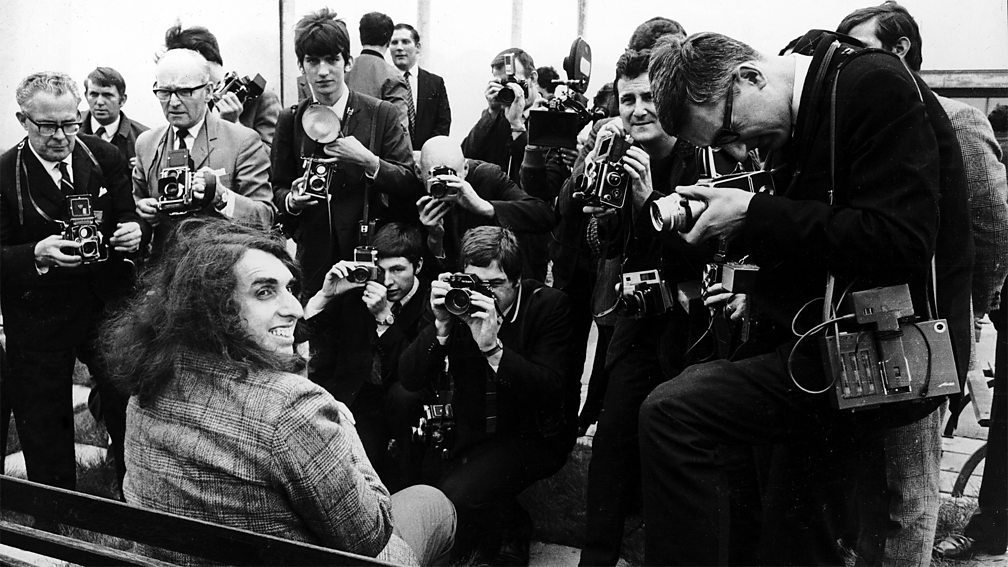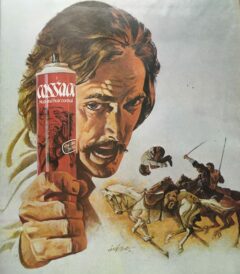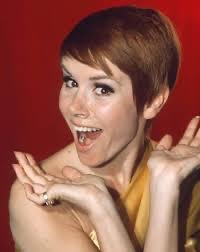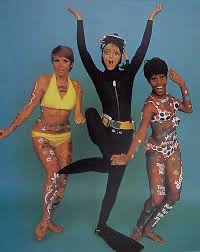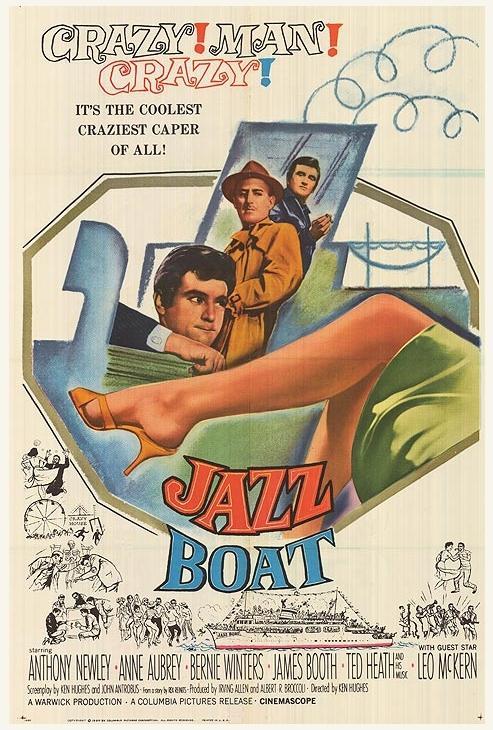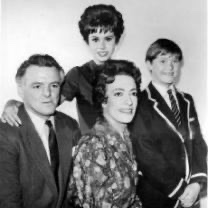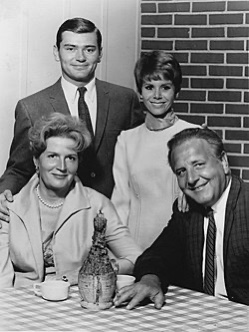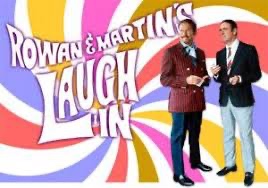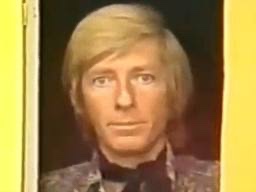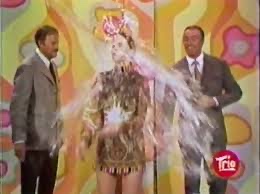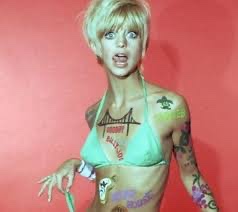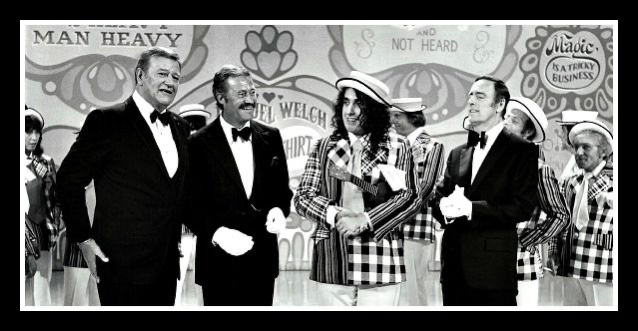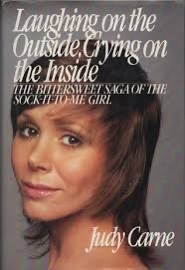He may have tiptoed through the tulips but he left giant footprints in the happening New York scene of the 60s
Tiny was kind of a Dadistic statement of performance art that reshaped our point of view of what a singer could be, what a man could be.
Peter Yarrow
You’re a gas!
Telegram to TT from George Harrison 1968
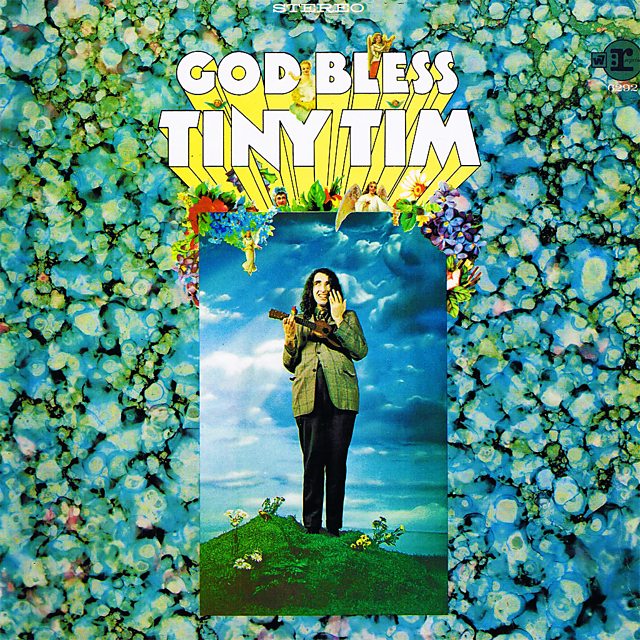
Ask anyone of a certain age with an interest in popular culture what they associate with the America of the 60s and they might mention Folk Music, Flower Power, Greenwich Village, Bob Dylan, Andy Warhol, ‘Happenings,’ psychedelia, Youth Culture and general weirdness amongst other things. What do they all have in common? I’ll tell you, as if you hadn’t already guessed: Tiny Tim. TT was everywhere, did everything, was known by virtually everyone in America, pulled back the boundaries of the idea of ‘celebrity’, took weirdness to a new level and rubbed shoulders with the great, the good and the bleedin’ awful. In short, he did it all. OK, his fame was transitory, as it so often is, but Tiny Tim, for a short glorious period was, after the President, the most famous person, not just in America, but all over the world. And he did it in a way that was endearing, funny, talented, ground-breaking, unassuming, self-mocking, eye-poppingly strange and, believe it or not, sincere. And you thought he was just a long-haired weirdo with a high voice and a ukulele. He was all that but he was so much more…..
I first came across TT on 23 November 1969 at the height of his fame. After conquering America without really trying too hard he toured Europe stopping off for a couple of weeks in the UK and making some TV and personal appearances. Oh, and also selling out the 5,200 capacity Albert Hall for one night. My encounter with TT was slightly more prosaic when he turned up on that Genxculture favourite and Sunday afternoon staple, The Golden Shot. I’ve written in previous posts about how TGS often featured unusual guest stars and this was one example (See Like A Bolt From The Blue: The Golden Shot). The first thing that surprised me, rather than Tiny himself, was that my mum had actually heard of him before. ‘Oh it’s Tiny Tim! He’s a scream!’ she giggled. I was curious as to how she’d heard of him as my mum and dad hardly had their fingers on pulse of popular culture in late-60s Edinburgh. But he’d been on a range of other British TV programmes during his previous 1968 tour (such as the Tonight programme which was a bit like The One Show but with proper journalists who didn’t ask such banal questions), so I can only imagine she’d spotted him on one of those. He seemed very tall, with long, dark, flowing wavy hair, a sports jacket your dad might have worn and, curiously, a shopping bag from which he pulled out his ukulele. He had a quick chat with the great Bob Monkhouse and then launched straight into his signature tune, ‘Tiptoe Through The Tulips‘ in his trademark falsetto voice. After he’d completed his set the audience went wild (ish) and he proceeded to blow them kisses, which was an odd thing to see on the resolutely conservative British TV, but I kind of liked it.
After that I don’t really remember seeing him on telly again but he was around the entertainment scene for many years, and though his fame diminished his personality never did and he carried on performing right up until his untimely death in 1996.
In the 1960s and 70s the USA was not just another country but another planet to us in the UK. All we had to go on was American films, TV series, the odd documentary, comics and news stories. There was, of course, no internet, and with only three TV channels, what we learned about America was limited. But America was exciting, pulsating, shiny, huge and, above all, different. And what I had no idea about was just how huge Tiny Tim was in the US before and after his British trips in 1968 and October 1969.
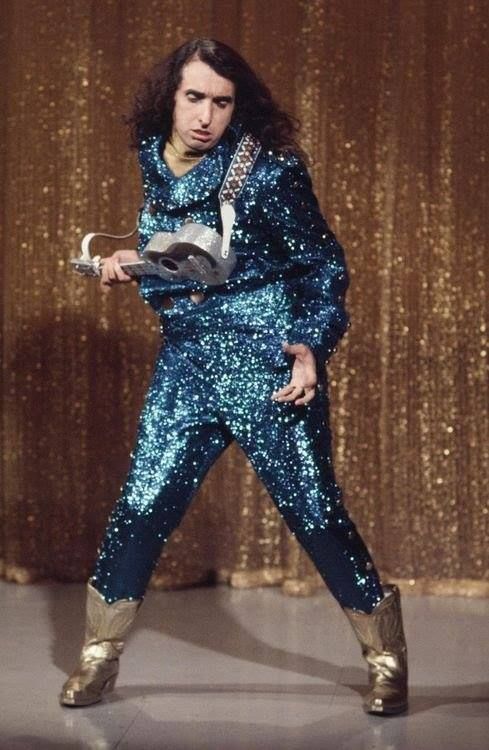
Tiny Tim’s, or his birth name Herbert Khaury, date of birth, as one might expect with so ephemeral a personality, was open to debate. However, it’s generally accepted that he was born in 1932 and was around 30 when he first became noticed.
His upbringing in one of the less salubrious areas of Upper Manhattan inevitably included a fair amount of bullying, a less than successful academic track record and a stormy relationship with his parents, who never encouraged or praised him in his attempts to be a singer, until, of course, he achieved success in the late-60s.
Throughout his childhood he was obsessed with the songs and records of the 20s and 30s and sat in his bedroom playing them over and over again and memorising the words and melodies. On dropping out of High School he was so desperate to be accepted as a singer that he packed in a number of dead-end jobs in order to perform for free at any New York bar or dive that would have him. He did, however, play at some of the most well-known venues in Greenwich Village and rubbed shoulders with the great and the good of NY folk music at the time. He was first spotted in 1962 singing at a freak show called Hubert’s Museum in Times Square, billed as ‘The Singing Canary.’ From there he received his first poorly paid engagement at the legendary Cafe Bizarre in Da’ Village, where he was billed as ‘Larry Love‘, a jazz and poetry venue which hosted Kerouac and Ginsberg during the same period. Two years later at the same place, Warhol would stroll in and spot the uniquely strange house band performing to virtually no customers and, on the spot, declare himself to be their manager. They were called The Velvet Underground (See Warhol: From Soup to Nuts? How Wrong They Were..).

From there he moved on to the just-as-legendary, and still around, Cafe Wha‘ in which musical royalty such as Jimi Hendrix, Bob Dylan, Peter, Paul and Mary and, latterly, Bruce Springsteen would cut their musical teeth. It was here he struck up a friendship with, as the great Clive James brilliantly punned him, ‘The Hoarse Foreman of the Apocalypse,’ Bob Dylan and stayed in touch with him until the end of the sixties, even appearing in a home movie Dylan was making at his home in Woodstock in upstate New York. The film is believed to still exist but little of it has been seen and is thought to still be in the possession of the enigmatic Mr Zimmerman.



He moved on to yet another legendary bar, Page Three, which had been, and maybe still was, a lesbian bar. It was here he met Lenny Bruce as they shared the same management and the two really hit it off. Lenny was obsessed with a single Tiny had given him. When Lenny had a gig at the also legendary Cafe Au Go Go in da Village, Tiny opened for him over two nights. Sadly, though unsurprisingly for the time, on those two nights Lenny Bruce was busted for obscenity by the buttoned-up NYPD. A third Bruce/ TT gig at the Fillmore East was cancelled on the night as Bruce was busted yet again before the show even started. But Tiny, once again, had a grandstand seat to everything that was happening in ‘happening’ New York at the time.
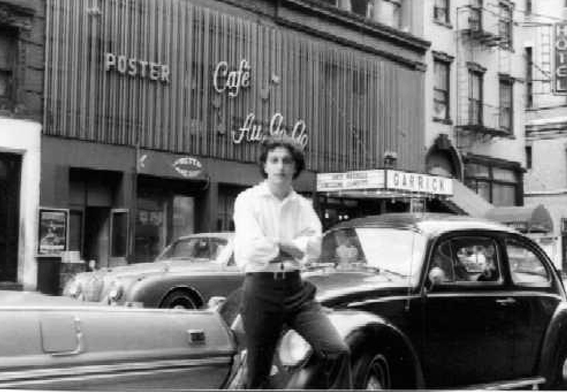
He would then find a more regular but no more financially lucrative gig at a midtown NY venue called The Scene, which was a discotheque mainly populated by rich but untrendy students. A place for ‘..rich kids who wanted to act like Village hippies,’ as TT described it. The Scene featured a mind blowing array of many yet-to-big acts such as Janis Joplin, Jimi Hendrix, The Doors and The Turtles, as well as Warhol’s Exploding Plastic Inevitable, and also attracted a NY celebrity clientele. Tiny was billed as ‘The Incredible Tiny Tim: 365 Nights A Year.’ In fact, for The Doors shows in 1967 Tiny opened the evening for them. Jim Morrison was impressed with Tiny and offered him a song he had recently written which he thought might suit Tiny’s increasingly odd repertoire. The song was ‘People Are Strange‘ and, to me, this was would have fitted into TT’s set list perfectly. Sadly for Tiny, The Doors‘ career suddenly took off in a big way and they decided to record ‘People Are Strange‘ themselves, but what a version that could have been. His friendship with Jim Morrison almost hit the skids, however, when Morrison in full live performance mode almost knocked Tiny unconscious with his swinging microphone. Luckily Tiny was unhurt as was their friendship.

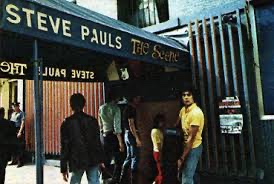



During his time at The Scene Tiny also developed a habit which might seem a tad creepy nowadays but at the time, I feel, was sincerely meant, though certainly on the eccentric side. During each year of his residency at The Scene he would select an attractive and vivaceous female regular attender to be his ‘Girl of the Year‘. The lucky lady would receive a shop-bought trophy from Tiny as well as, sometimes, a poem or even a song. This ritual continued for many years, even after his marriages, and the recipients seemed happy and not a little flattered. When The Scene’s recipient of the 1969 trophy, Miss Corky Ducker, was sacked from her job there, Tiny refused to play again until she was reinstated. Tiny, of course, got his way.
It was here Peter Yarrow of Peter, Paul and Mary saw him and alerted Reprise Records to him and they would eventually sign TT. He also appeared in a friend of Yarrow’s, Barry Feinstein, underground film which explored the ‘craziness and nuttiness of …the time‘, You Are What You Eat, to not much acclaim. His appearance features him performing his set backed by a group of musicians known at the time as The Hawks. They would later become Bob Dylan’s backing band, going by the more prosaic name of The Band.
In 1967 Reprise Records commissioned Tiny to record his first album in LA produced by Richard Perry who had previously produced such A Listers such as Harry Nilsson, Captain Beefheart, The Pointer Sisters, Diana Ross, Andy Williams and latterly even Leo Sayer. The album entitled God Bless Tiny Tim received some excellent reviews and is still seen by many to be a psychedelic classic. It was Tiny’s most complete and characteristic recording and reached the Billboard top ten in July 1968. Amongst the tracks laid down included an obscure Irving Berlin song entitled Stay Down Here Where You Belong, and some songs which became Tiny standards such as Strawberry Tea, Ever Since You Told Me That You Love Me (I’m A Nut) and Never Hit Your Grandma With A Shovel. On Then I’d Be Satisfied With My Life a wispy voice in the background sighing ‘Oh Tiny!’ just happened to be an up and coming model and singer known as Nico. As I said, Tiny was everywhere and came into contact with everyone who was anyone or was about to become someone at the time.
While recording this album Richard Perry took TT to The Hog Farm hippy commune outside LA where he performed and went down a storm. In the audience that day was a frustrated musician, a certain Charles Manson who would make a slightly different name for himself a year later.
Shortly after completing this record Tiny appeared at the Newport Pop Festival, second on the bill to Jefferson Airplane and above The Animals, The Byrds, Grateful Dead, Canned Heat and Steppenwolf. No mean feat and a good indication just how well known Tiny was becoming.

It was at this time when he was becoming well-known that he began a life-long love of cosmetics and developed a rigorous skin care regime. During the height of his fame he would usually walk on to a TV studio set carrying a bog average quality shopping bag which would contain his ukulele and also his increasing range of skin care products. Before each show, whether on TV or live he would apply Elizabeth Arden white powder to his face which made him look even more bizarre and it quickly became a regular part of the TT ‘look.’
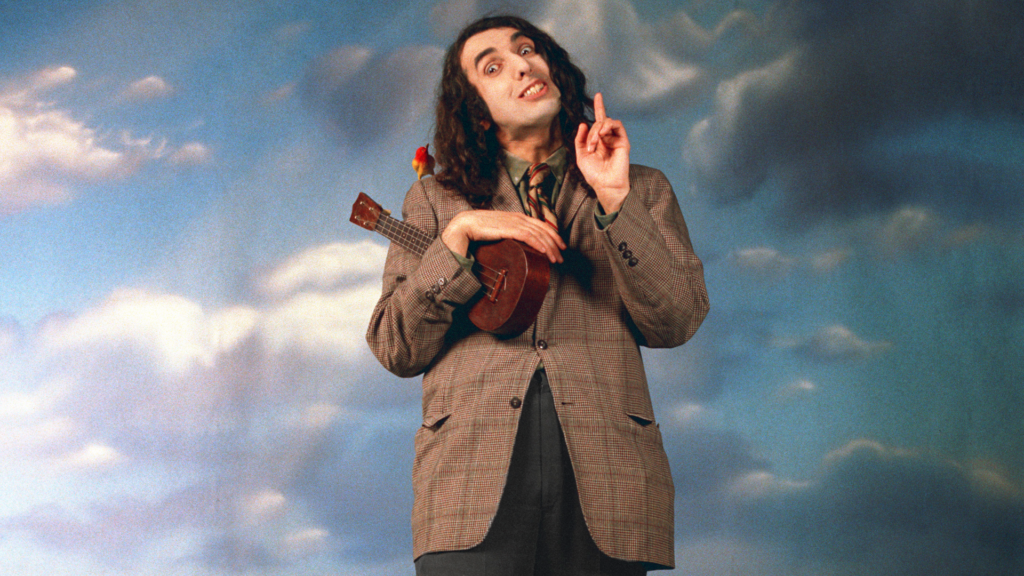
Tiny’s other personal habits also seemed a touch extreme. He had a revulsion of public toilets and during recording sessions in New York, if he needed to go for any reason, he would walk the 10 blocks back to his parents’ flat and return to the studio a couple of hours later.
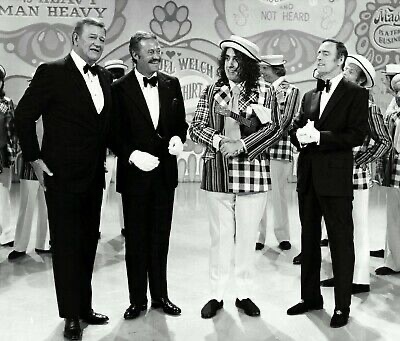
Although Tiny was becoming very well known around the US, 22 January 1968 was the date that his personality exploded before the American viewing public. This was the day the pilot episode of Rowan and Martin’s Laugh-In was broadcast and along with Lorne “Ben Cartwright’ Greene, Leo G ‘Mr Waverley‘ Carroll, US comedian Flip Wilson and psychedelic rockers The Strawberry Alarm Clock, Tiny was unleashed on a mostly unsuspecting multi-million TV audience and a completely unsuspecting Dick Martin. Martin had not been told about a ‘special guest’ and after a brief introduction by a chain-smoking Dan Rowan who then left the set, Dick was left to make what he would of Tiny who walked on with his customary shopping bag and brimming confidence. Dick’s incredulity is palpable as he tries to make sense of this larger than life character in front of him and it cemented the character of Tiny Tim in the US zeitgeist for years to come. So much so that Tiny was invited back to Laugh-In regularly and it’s only surprising he didn’t become a permanent member of the cast. Tiny was up for anything, which suited the producers and writers who came up with many weird and wonderful scenarios for him. Not least with that bastion of patriotic conservatism, Big John Wayne.
One might think that a meeting between ultra-conservative Big John and unwitting symbol of late-60s ‘flower power’ Tiny Tim would be awkward to say the least. Not so, however. Big John was always up for something different and was happy to send himself up, hence he appeared a number of times on the fairly anarchic and non-establishment Laugh-In. And, oddly enough, Tiny was something of a self-proclaimed conservative himself. He was deeply religious, thought America’s role in the Vietnam War was right and he believed women were made to look after men and tend the home, despite his love and fascination for the girls who became his fans at The Scene and anywhere else he was performing, not forgetting his rather libertarian approach to his many marriages, and he just loved Richard Nixon. Strange bedfellows indeed but it’s those sort of weird encounters which make this cultural period so interesting. And talking of strange bedfellows, while TT was recording an album at a New York studio in 1968 the person in the next studio had heard about Tiny and dropped in for a rap. Photographs were taken and one of them ended up on the back this artist’s album. The artist was Frank Sinatra, one of TT’s idols, and the album was ‘Cycles.’
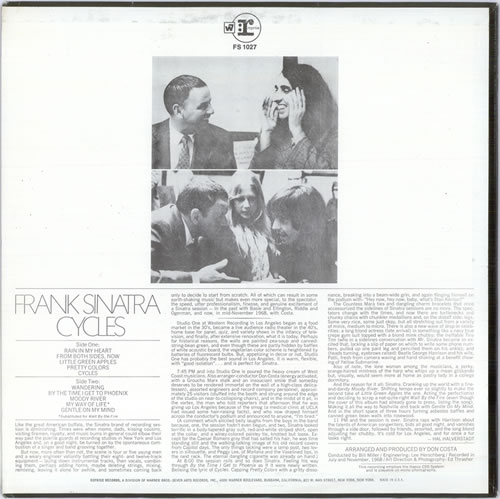
In the same way TT was a regular guest on Laugh-In, he was also a great favourite with one of America’s most popular programmes, Johnny Carson’s The Tonight Show appearing, in what may be a record, an incredible 28 times. So why was this rather odd individual so popular? Because he was a chat show host’s dream. It’s no surprise that he also appeared numerous times on:
- The Merv Griffin Show
- The David Frost Show (13 times including once as guest host)
- The Mike Douglas Show (15 times)
- The Jackie Gleason Show
- The Dick Cavett Show
- The Arsenio Hall Show
- The Howard Stern Show
- The Conan O’Brien Show
….amongst many others.
Chat show hosts loved him because all they had to do was light the blue touch paper, sit back and unleash Tiny who would pontificate at length on pretty much any subject thrown at him. It was while doing The Merv Griffin Show on March 7 1966 that he was spotted by a casting director in LA. From this he was offered a part, playing himself obviously, on the pilot episode of Ironside for which he was paid $300. A lot of money in those days and certainly a lot of money for Tiny at that time.

But it was The Tonight Show with Johnny Carson that on December 17th 1969 gave Tiny his most memorable TV moment. It was on this night that Tiny Tim married his first wife, Miss Vicki, live in front of a TV audience estimated to be approaching 50 million. It’s said 84% of viewers in New York watched the glitzy ceremony. In Martin Scorsese’s brilliant satire, The King of Comedy, celebrity wannabe, Rupert Pupkin played by Robert De Niro, dreams of being on a Johnny Carson-type chat show, hosted in this case by the fictional Jerry Langford played by Jerry Lewis, who suddenly brings Rupert’s girlfriend on to the set and suggests they get married live on the show. Rupert, after a bit of initial mock-shock, is only too happy to go along with it. One can’t help but surmise that Tiny and Miss Vicki’s media marriage was on Marty’s mind when he was making this film.
TT had met 17 year old Miss Vicki Budinger only a few months before at a book signing, a book of his own personal philosophies, ‘Beautiful Thoughts,’ and decided he wanted to marry her as she was the most beautiful girl he had ever seen. That month as least.
The ceremony was everything one would expect from such a tacky, media-driven event. Even up to the point when TT turned down the glass of celebratory champagne offered by Carson’s sidekick Ed McMahon preferring to drink glasses of milk into which he dropped spoonfuls of honey for himself and Miss Vicki, in keeping with his strictly vegetarian diet (even that was seen as weird in the US in the late sixties!). The marriage famously, and possibly unsurprisingly, didn’t last long. TT had already told the lovely Miss Vicki that she could never hope to be the only woman in his life. Word got out to the pursuing press pack that things in the tulip garden were less than rosy and within a couple of weeks Carson was making jokes in his opening monologue that Miss Vicki had put a sign up on the door of their hotel bedroom saying ‘Please Disturb.‘ That said, TT hung around long enough to father his only child named, believe it or not, Tulip.
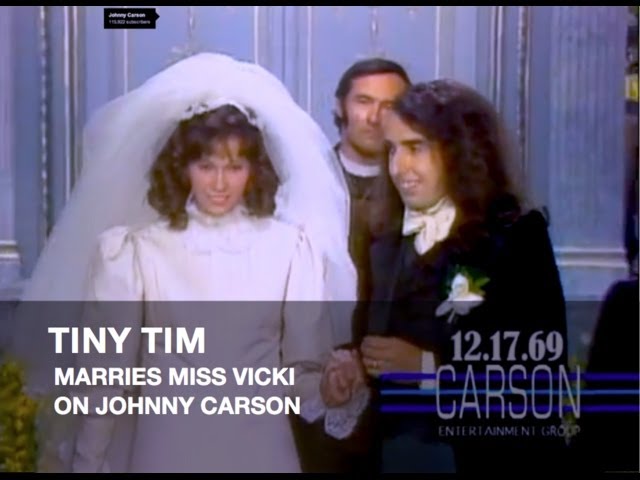
Miss Vicki has resolutely refused to discuss with anyone her brief marriage to TT, however she reappeared in the newspapers a few years ago when it was discovered she was having a relationship with a Rabbi who was convicted of hiring a hitman to murder his wife. Strange how publicity just follows some people.
The years ’68-’69 proved to be the zenith of Tiny’s career. He was everywhere although the US was more familiar with his exploits and ubiquity than the UK. But in October 1968 that was all to change. Tiny brought his unique personality and show to a rather staid UK that didn’t quite know how to take him. I’ve already mentioned his landmark appearance on Genxculture favourite The Golden Shot (See Like A Bolt From The Blue..The Golden Shot) in 1969, his second UK tour, and according to the definitive TT biography, the superb ‘Eternal Troubadour: The Improbable Life of Tiny Tim‘ by Justin Martell and Alanna Wray McDonald, Tiny appeared on The Dave Allen Show, which was a chat show at the time, The Mike and Bernie Winters’ Show and BBC’s Tonight magazine programme with heavyweight journalist Kenneth Allsopp during his first visit in 1968. However, IMDB does not mention Tiny appearing in any of these shows at the time, although, with the exception of ‘Tonight‘ with Kenneth Allsop which ceased broadcasting in 1965, all were being broadcast at the time of Tiny’s UK tour. Because such light entertainment series were routinely wiped straight after transmission, it’s possible TT did appear on them but his participations have been criminally lost in the mists of time. It’s common that even production notes of most of those series may also have been destroyed. So with regards to TT’s British TV appearances , with the exception of The Golden Shot, it’s anybody’s guess and, sadly, TT is no longer around to confirm any of them, not that he’d probably remember.
What is beyond doubt about this UK visit was on October 30 1968 Tiny Tim performed at the 5000+ capacity Royal Albert Hall in London. Also on the wonderfully 60s bill that night was Peter Sarstedt, who’d had a number 1 hit with ‘Where Do You Go To My Lovely?‘ that year, Joe Cocker and the wonderful, and almost as ubiquitous as TT, Bonzo Dog Doo-dah Band (wonder what Tiny made of them?). Tickets for this gig were £37 each, a king’s ransom in those days. The programme for the evening even reproduced a telegram Tiny received from heavy rockers Deep Purple wishing him luck. In the audience were members of The Beatles (John Lennon definitely) and The Rolling Stones, Marianne Faithful, Harry Nilsson and the greatest liggers of all, members of the royal family who never turned down a free gig. In acknowledgement of the Beatles and Stones‘ attendance Tiny did his own personal versions of ‘Nowhere Man‘ and ‘I Can’t Get No Satisfaction.’ In fact The Beatles were so impressed with Tiny that they invited him to record his version of Nowhere Man for their Fan Club’s Christmas album of 1968. He did that in George Harrison’s New York apartment during a visit with him earlier that year.

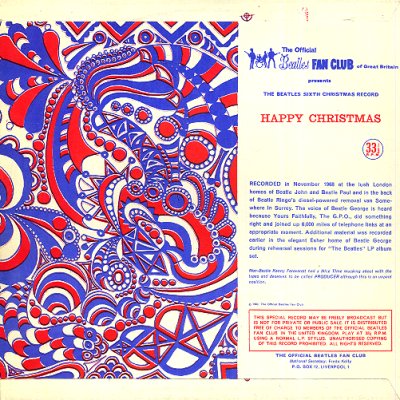
By the early 70s Tiny’s career was on the wane. In keeping with his rather rudimentary grasp of business affairs he had a succession of managers, business advisers, lawyers and agents all working for him. Some were completely trustworthy while some were, to say the least, mercenary. TT had no idea how much he was making from concerts, personal appearances, record sales, book sales and TV roles. To be fair TT was fairly loose with his money also spending huge amounts on cosmetics and various other non-essentials. All his entourage had to be paid and he left them to do that themselves. Even Miss Vicki was on a retainer. At one point in the late 60s TT was being managed by two individuals who may or may not have had strong associations with The Mob. So much so that no one in his pay was brave enough to tell them they were fired.
The novelty of Tiny’s act began to wear off, his TV appearances began to get fewer and his rather conservative views began to sound hugely dated, not to say distasteful and most certainly unfashionable, during the climate of fervent anti-Vietnam feeling. One of his 1970 releases was his version of an old patriotic anthem called ‘What Kind Of An American Are You?’ which didn’t go down well with the Anti- War movement young people who had previously made up a large section of his fan base.
That said, he was still famous enough and media-friendly enough to guest host three episodes of The David Frost Show in the US, amongst his guests being an intriguing encounter with Orson Welles. He even recorded an English patriotic medley for the David Frost Show. Now that is weird!
Possibly his last major public appearance was at the Isle of Wight Pop Festival where he performed There’ll Always Be An England to a rapturous 600,000 crowd.
He continued to perform for the rest of his life, popping up occasionally on The Howard Stern Show in the US and playing a psychopathic clown in the horror film Blood Harvest in 1987. He divorced Miss Vicki in 1972 and was married twice more to Miss Jan and finally Miss Sue who he was still married to at his death in 1996.
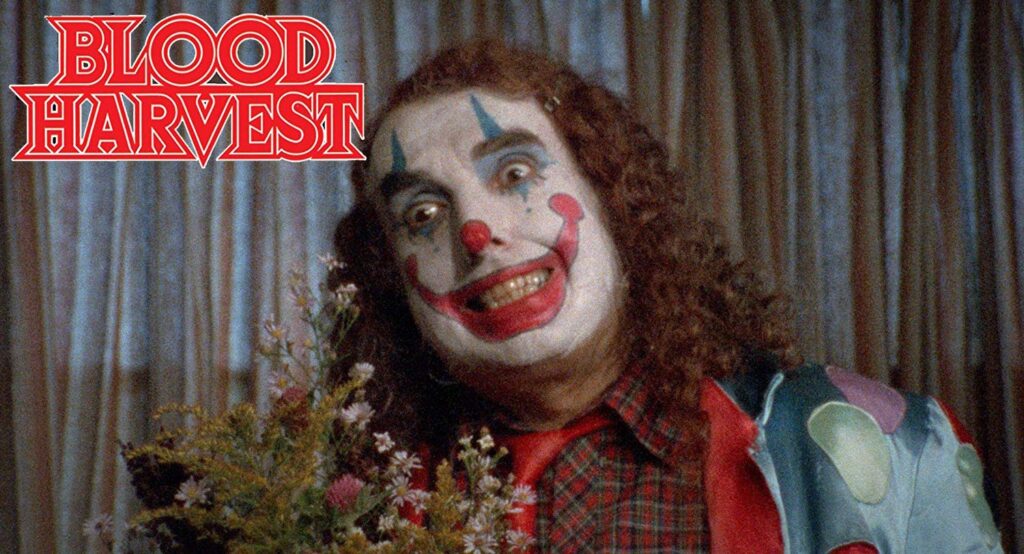
Tiny just loved performing, whether it was to an audience in single figures or the Isle of Wight Pop Festival with an audience of 600,000. And it was performing that eventually killed him. After he suffered a serious heart attack in 1996 he was advised by doctors to stop performing immediately but he just couldn’t do that. He died while performing the song he’s most associated with Tiptoe Through The Tulips at a festival in Minneapolis on November 30 1996.
It’s how he would have wanted to go.
Tiny Tim was seen by many people at the time as a weirdo, someone who was affected and was ‘at it.’ Few believed his act was really sincere but many liked him all the same. But he was sincere, there was nothing about Tiny Tim that was artificial. I began this article as one of those slightly cynical people but have concluded that, despite some real eccentricities, he was what you saw and heard and I ended up with a genuine affection for him. He was someone who just wanted to make the world a better place (despite his odd political beliefs). And the world at the time would have been a worse place without him and what an albeit brief but stratospheric professional life he had. Tiny rubbed shoulders with anyone who was anyone in the culturally explosive New York of the 60s and they appreciated him.
So, God bless Tiny Tim. He was a one-off. And in a nice way.
